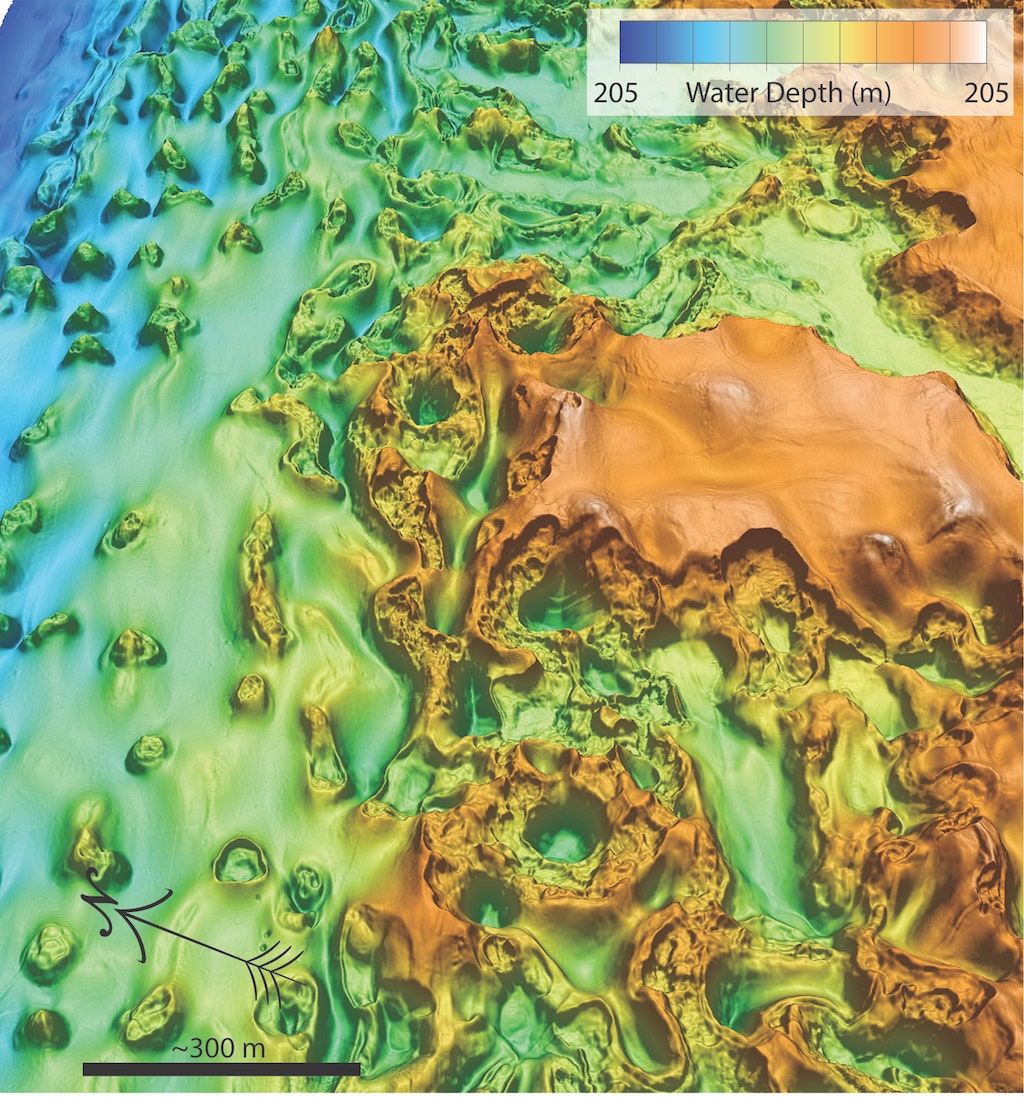[ad_1]
The result is the worrisome image shown above — a massive sinkhole indicating that the subsea permafrost has thawed and collapsed. This sinkhole is a giant among dozens of pockmarks the researchers found on the seafloor. Scientists have already documented this violent phenomenon, called thermokarst, on land. Because permafrost is made of soil suspended in a matrix of frozen water, when it thaws the land shrinks, gouging massive holes across the Arctic landscape. And as these images of the seafloor show, it’s also happening underwater.
“I think it’s just absolutely remarkable that there are places on the seafloor where changes of this scale are happening at this rate,” says Monterey Bay Aquarium Research Institute marine geologist Charlie Paull, a coauthor on the paper. The entire survey covered an area that’s half the size of Manhattan and tallied 40 holes. (You can see a portion of the area in the image below.) The giant one, he says, “is equivalent to a whole New York City block composed of six-story apartment buildings.”
Why is this happening? On land, permafrost is thawing because temperatures are rising. But, Paull says, there is no evidence that seafloor temperatures are rising enough to initiate thaw. So it’s likely that thaw isn’t starting from above, but from below. Submarine permafrost forms a thick wedge of perhaps several hundred meters, says Paull. Beneath that runs relatively warm groundwater, which can degrade the permafrost. “If it’s pure permafrost ice, it’ll produce voids that subsequently collapse,” he says. “And so we’re inferring that the voids that we’re seeing developing in this environment are a consequence of the long-term warming that the seafloor in this area has experienced.”
That long-term bit is important. Unlike rapid thaw on land, the degradation of this submarine layer has probably been unfolding over much longer timescales — a lingering effect of how much the world has warmed since the last ice age. “I think the biggest lesson from this paper is a reminder of how long these systems take to respond,” says Ben Abbott, who studies permafrost at Brigham Young University but wasn’t involved in the research. “You could maybe misinterpret that to say, ‘Oh, there’s nothing to worry about.’ I actually take exactly the opposite conclusion. Once the systems are in motion, we have very little ability to change the direction of it. It’s not a car with a steering wheel — this is more like a boulder that you push off the top of a mountain. ”
While this undersea thawing is likely driven by long-term processes, scientists are concerned it could accelerate because the Arctic is now warming so quickly. Ocean circulation patterns might change, too, bringing in yet more warm water. “So the kind of long-term change that we’re observing right now could be accelerated quite soon by human interference on the climate,” says Abbott.
Two big unknowns are how much submarine permafrost exists, and how much greenhouse gas it holds. Scientists can’t take samples of every square foot of Arctic seafloor, so instead they look backward, comparing how much land was exposed during the last glacial maximum thousands of years ago to how much is exposed today. This gives them an idea of how much permafrost may have formed and then submerged when the glaciers melted and the sea rose to its present level. Estimates vary, but there may be around 775,000 square miles of submarine permafrost, sequestering perhaps hundreds of gigatons of organic carbon and tens of gigatons of trapped methane.
[ad_2]
Source link



